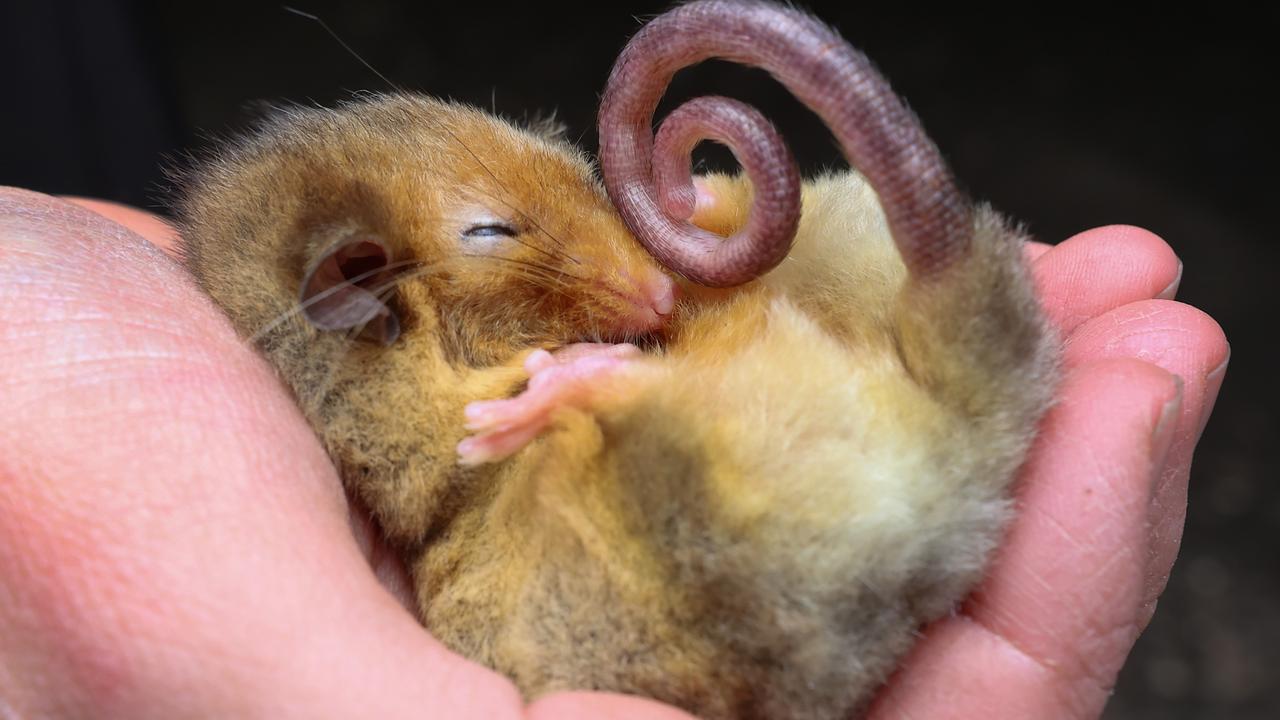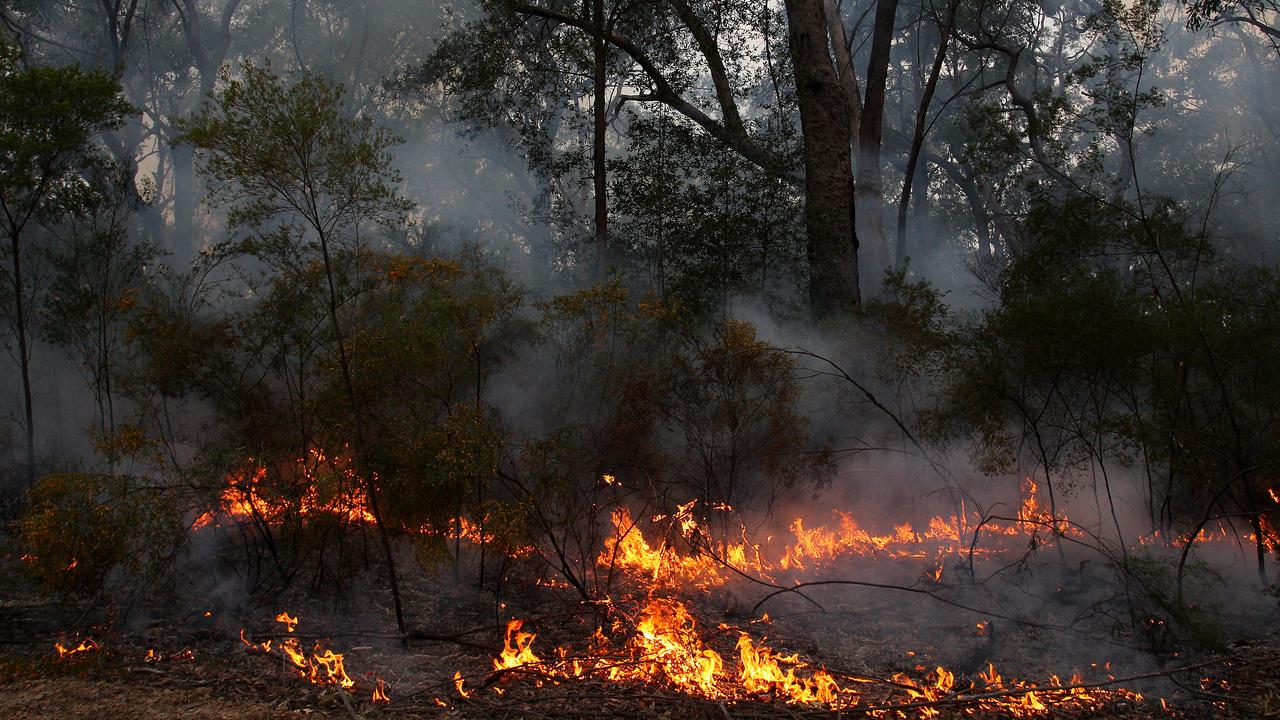Warning of Australia’s next great animal ‘extinction event’
Three quarters of Australia’s animals, birds and other specifies could vanish — and we’re doing next to nothing about it.
Australia’s iconic koala could be one of the 75 per cent of Australia’s animals, birds and other species that fall victim to a coming “extinction event that’s equivalent to the loss of the dinosaurs,” a scientist has warned.
And it’s an extinction event blamed on humans.
Koalas, whose numbers have dropped dramatically, are just one of the most obvious potential Australian victims of climate change in the animal kingdom.
Already one mammal has been declared extinct, felled by the changing climate. Plenty others are at risk of going the same way.
Time Is Now is part of news.com.au’s partnership with the Monash Climate Change Communication Research Hub, looking at the impacts of climate change across Australia by 2050
Professor of ecology at Flinders University Corey Bradshaw told news.com.au the plight of the koala highlighted that the impact of climate change was another blow to animals that were already suffering.
“Most animals decline towards extinction, they don’t go for a single reason,” Prof Bradshaw said.
A species that has seen its habitat dwindle through deforestation might then be wiped out by a bushfire, whipped up by higher temperatures and ripping through the one area where it remained abundant.
Indeed, the bushfires of 2019 are thought to have killed three billion animals.

Extinction event equivalent to dinosaurs
“It’s the frequency of extreme events that become the problem,” Dr Bradshaw said, explaining that recurring disasters didn’t give time for fragile wildlife to recover.
“It’s like you smack them on the head and they have time to heal; and then you smack them again, they’re still going to be around. But if you smack them again and again, the chance of survival is much lower.”
The latest report from the Intergovernmental Panel for Climate Change (IPCC) confirmed the world has warmed by 1.1C with Australia warming by a much higher 1.4C.
The IPCC expected global temperatures will exceed 1.5C of warming within 20 years, based on current climate pledges.
“With climate change there’s no way we’re going to stop 2C of warming and it’s looking more like 3C or even 4C by the end of the century which from a biodiversity perspective is absolutely catastrophic,” Prof Bradshaw said.
“At the rate we’re going we’ll lose 75 per cent of our species in a couple of hundred years potentially causing an extinction event that’s equivalent to the loss of the dinosaurs 66 million years ago.”
Already Australia has had its first climate change extinction. The Bramble Cay melomys lived on a single island in the Torres Strait. Last seen in 2009, it’s thought continued inundation of the cay by rising sea waters saw the end of the rodent.

Koalas are ‘stuffed’
The koala is listed as a “vulnerable” species by the Federal Government.
But Australian Koala Foundation (AKF) chair Deborah Tarbart said she suspected its prospects were bleaker than that.
According to data from the AKF, the koala population nationwide has shrunk by 30 per cent since 2018. There may be only between 32,000 and 58,000 koalas left in the wild, down from between 46,000 and 82,000 three years ago.
That’s far fewer than official Government estimates, which put koala numbers as high as half a million. The AKF insists its numbers are more reliable.
The koala is now extinct in seven regions where in 2018 there were still populations and some areas have just five to 10 of the animals left.
The AKF says falls in koala population have been recorded across the board but are highest in Queensland, which may now have just 6500 koalas.
The numbers are broken down by federal electorates with just two, Mayo, south of Adelaide, and Corangamite close to Geelong, now having more than 5000 koalas. A further 24 electorates have fewer than 100 koalas left.
“I couldn’t believe when I saw the numbers,” Ms Tarbart said.
“There used to be five electorates with more than 5000 animals and now there’s only two and it’s shocking that it’s happened in just three years.”
While cars, dogs and developers are responsible for many of the deaths, increasingly it’s drought as the gum trees the koalas call home shrivel up, or the lumbering animals are torched by more and bigger fires.
“I don’t like to use the word extinct because I think it takes hope away. But it’s clear koalas are under threat, there’s no question they’re in trouble,” Ms Tarbart said.

Prof Bradshaw did not have that level of muted optimism.
“Koalas are stuffed,” he told news.com.au.
“When they go extinct is up for debate, but whether they will go extinct is not really up for debate anymore.
“Most of their native habitats have been cleared, they’ve been highly fragmented by roads and property development. Then you’ve got a lot of genetic problems and diseases and then the ones that survive that get taken out by dogs and hit by cars.
“Add bushfires, and there’s not a lot of long term hope for that species in particular.”
Australia one of the ‘worst records for animal extinctions’
Other at-risk species include some types of burrowing crayfish, tiny lobsters that live in wet soils and could be wiped out by warmer weather. The mountain pygmy possum hibernates in the snowy heights of the Victorian Alps but with less snow its future is uncertain. Some times of birds are also in the cross hairs.
“Along with habitat destruction and invasive species, climate change is one of the biggest threats to Australia’s natural environment,” Australian Conservation Foundation nature program manager Basha Stasak told news.com.au.
“Australia has one of the worst records when it comes to animal extinctions. We don’t have a good track record.”

What needs to happen
Ms Stasak said the top priority was for Australia to take some “pretty serious action” on climate change as well as reforms to national environment laws.
The AKF has a vision of a “Great Koala Trail”, an unbroken koala habitat stretching 2443 kilometres from Cairns to Adelaide.
Ms Tarbart said much of the habitats were broken up but some were so close they could be connected by “kiss points” where vegetation could be planted to bridge the gap.
“I still have hope,” Ms Tarbart said. “As long as we get on with it.”






